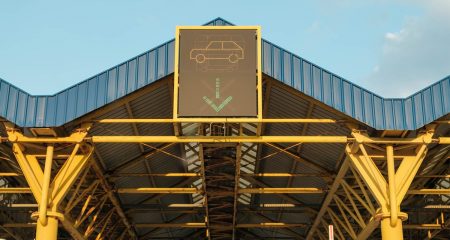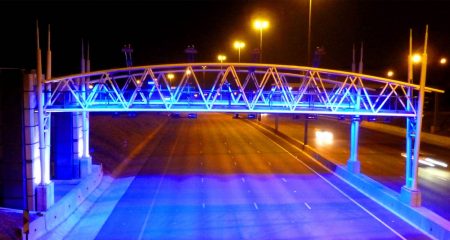
From cameras that allow for the three-dimensional rendering of vehicles through to the hundreds of kilometres of fibre-optic cables that link the toll gantries and control offices, Gauteng’s e-tolls project is a marvel of modern technology.
Alex van Niekerk, project manager for the Gauteng freeway improvement project, says the tolling system is divided into three main segments: the gantries and other physical tolling equipment situated at selected toll plazas, as well as a transaction clearing house and a violation processing centre, both of which are located in a central operations centre in Centurion, near Pretoria.
“The gantries take pictures of passing vehicles, read their e-tags, and measure their length, width and height,” Van Niekerk explains. This information is then sent immediately, over fibre, to the transaction clearing house where it is compared to the database.
“The information is verified, and the details of the e-tag are compared with the vehicle’s licence plate, the vehicle type and other information contained in the registered account,” Van Niekerk says. “The appropriate account is reviewed, the tariff is applied and, where registered users’ accounts are in arrears, invoices are sent out every 15 days.”
The central operations centre has capacity for 450 call centre agents, who will assist the public with account registration or queries between 6am and 10pm daily. This centre, like each of the gantries and the roadside offices, is connected to Sanral’s network using fibre-optic cable.
Van Niekerk says there are no plans initially to lease spare capacity on this fibre but once the project is up and running and the amount of surplus capacity can be accurately quantified, this may change.
Van Niekerk claims the e-tags cannot be cloned. Where there are discrepancies between the licence plate and the details contained in the database, these are verified manually by staff at the central operations centre. The system’s extensive communication system allows law enforcement officials to deal with vehicles with fraudulent licence plates more efficiently.

One of the benefits of the e-tolling network’s extensive closed-circuit television camera coverage is the Twitter account — @iTrafficGP — set up by Sanral to provide live traffic updates to the public. The same system is used to notify the authorities of incidents on Gauteng highways so that these can be seen to promptly.
Salahdin Yacoubi, CEO of the Electronic Toll Collection company, which operates the system on behalf of Sanral, says one of the key functions of the central operations centre is to monitor the network of gantries and other facilities that constitute the e-tolling system.
“The system is already running, but without the billing aspects of the service in operation,” Yacoubi says. All aspects of the system, from power and communications to the IT systems necessary to run it, are monitored 24 hours a day.
With all of the data the central operations centre collects, it could be inundated by members of the public wanting footage of accidents.
“There is a lot of data is collected at the centre, but the privacy of that data is paramount,” says Van Niekerk. He says Sanral doesn’t want the public asking for footage because it can’t guarantee it’s wanted for legitimate purposes.
“If we’re approached through official channels, like the police, we will release footage, but you must remember we use ‘pan-tilt-zoom’ cameras so that we can get an overview of an area or zoom in to look at something in detail. We’re not covering every inch simultaneously.”
Although the system is well suited to monitoring motorists’ speeds, there are currently no plans to use the system for trapping. This may change in future. — (c) 2012 NewsCentral Media




